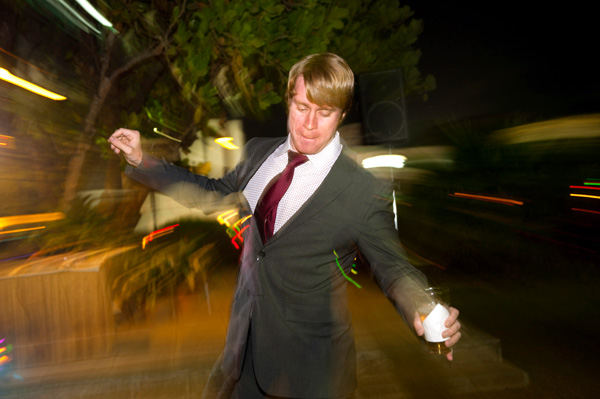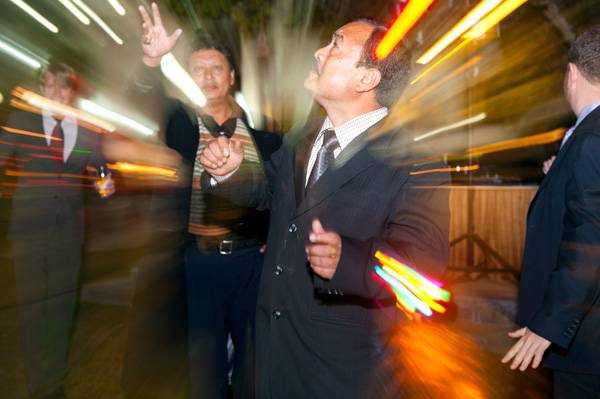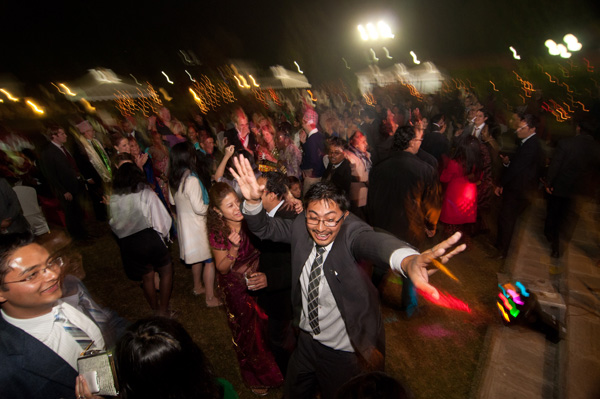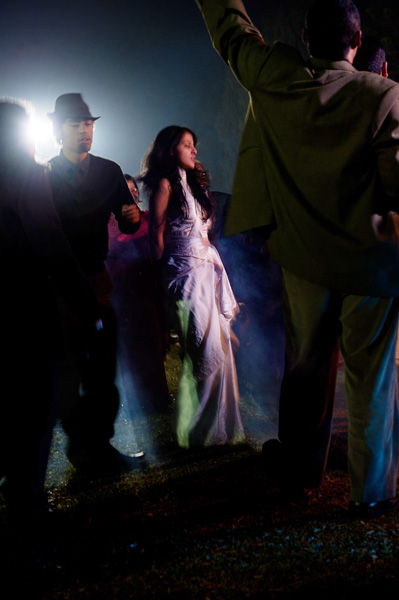Taking photos of people dancing at a party can be a lot of fun.
Because you’re working with a still medium, often the ways you use to get motion into the photo are crucial in setting your photos apart from the rest.
Most parties end late, so the dancing doesn’t happen until way after dinner, and it’s usually dark. If you use a very high ISO to get some shutter speed, it may not be enough to render your subject sharp, like in the photo below.
How do you capture great dance photos in the dark? Here are some techniques you can start using this holiday season.
If you’ve got a flash unit, you can use some techniques that freeze the motion of the dancer but leave an impression of motion in the background or foreground.
A technique I find very useful is the rear curtain flash sync. This is not as complicated as it sounds!
The first thing you need to do is to set your flash to TTL, or through the lens metering. That means the flash unit senses the amount of ambient light around your subject and calculates how much light it should pop out to light the picture.
You can use TTL to ‘stop the motion’ and freeze the dancer in the photo.

Using a flash and a synching technique can freeze the dancer and add motion blur.
But here’s where it could get pretty interesting. What if you had dance floor lights that were moving? How could you use the technique to create an interesting photo?
If you're using a zoom lens, you can start the lens at the longest focal length. Mine was 70mm. Then while depressing the shutter to focus, quickly move the lens to the widest aperture (in my case 24mm), and at the end of the motion, click.

Zooming the lens before pressing the shutter all the way creates cool light trails.
What this technique does is to freeze the focus on the subject, tell the flash to light the subject, but blur the ambient light around the subject.
If you’re using the zoom technique, your photo will look like there’s Star Wars light beams coming straight from the foreground to the background. Very cool.
A variation of this technique is the spin-the-lens method. You perform the same technical actions, but instead of zooming, you tilt your camera left and right or move it up and down. The result will be light trails ‘drawing’ the motion into the captured image.

Move the camera up and down while taking the shot to create different light trails that suggest motion.
Your photos of people dancing don’t have to look like frozen images of people in strange poses! With one flash and a simple technique, you can start making dance photos that capture the excitement and motion of a good night out.






3 Comments
Try the camera spin and end on a zoom from widest focal length to longest with second-curtain flash for a dreamy effect, e.g.
https://www.flickr.com/photos/natecochrane/6542198209/in/photostream
Try switching the order around for different effects.
This photo was taken with a narrow aperture (f/22), FaderND and low 50 ISO to limit the daylight sun, but at night just use your exposure triangle formula to work out the appropriate aperture and ISO for a longish exposure that gives you the time you need to complete the mechanics.
This 10-second-exposure isn’t of people dancing but you get the idea of an effect you can get using the same technique on human subjects.
Great article! I’ve never used rear curtain flash before but am keen to give it a red hot (and now I have a reason – lots of dancing around this time of year too).
Took this one the other night just with fast lens and high ISO – had to reduce a lot of noise in post- processing but I feel it adds to the effect.
https://www.flickr.com/photos/66055196@N02/6528751061/in/photostream
I use second curtain flash a lot when working with rock bands in low lit clubs, but will have to try it on dancers!
I find it much easier to capture low light with my DSLR rather than my bridge compact (although it can be done for static images). Here are some I took at a wedding disco, although most of these were taken without flash and with a medium ISO: